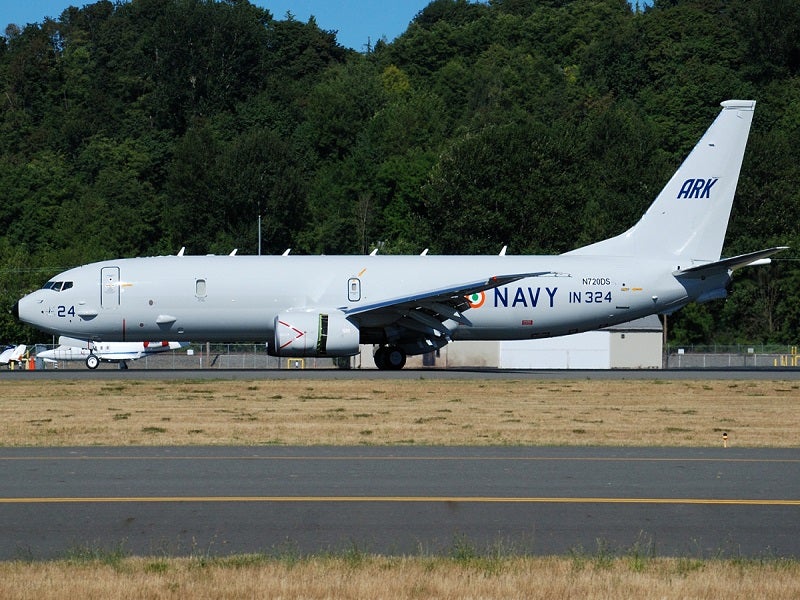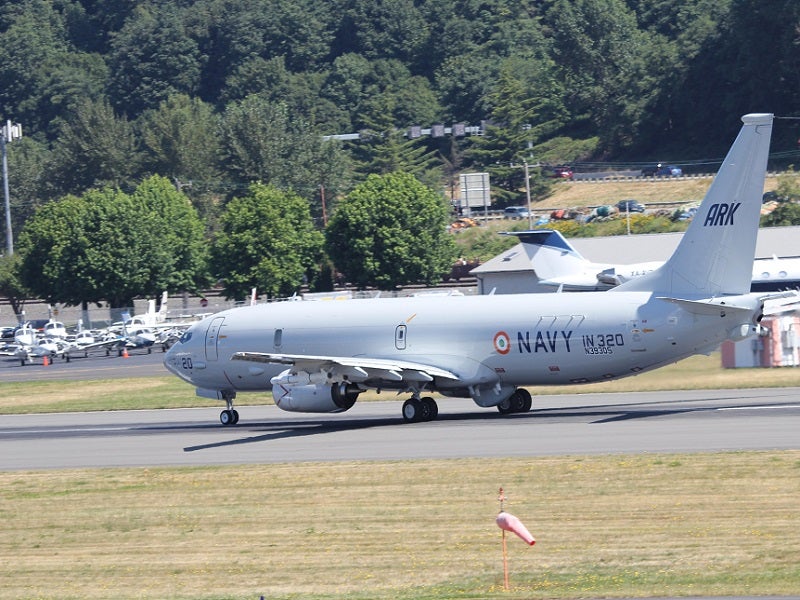P-8I is a long-range, multi-mission maritime patrol aircraft being manufactured by Boeing for the Indian Navy. It replaced the ageing fleet of the Indian Navy’s Tupolev Tu-142 aircraft.
The P-8I aircraft is a variant of the P-8A Poseidon multimission maritime aircraft (MMA) operated by the US Navy.
It was designed to protect the coastline and territorial waters of India. It can conduct anti-submarine warfare (ASW), anti-surface warfare (AsuW), intelligence, maritime patrol, and surveillance and reconnaissance missions.
Orders and deliveries of Boeing’s aircraft
In January 2009, Boeing was selected by the Indian Government to supply eight P-8I maritime reconnaissance aircraft to the Indian Navy. The contract also included an option for four additional aircraft. The Indian Navy was the first export customer for the aircraft.
The maiden flight of the first P-8I aircraft was made in September 2011. The official flight test programme of the first aircraft began in July 2012, and the second P-8I aircraft performed its first flight in the same month.
The first P-8I was delivered to the Indian Navy in December 2012. The remaining aircraft were delivered between 2013 and 2015.
India’s Cabinet Committee on Security (CCS) approved the acquisition of the four additional P-8I aircraft from Boeing in mid-2016.
In November 2019, the Defence Acquisition Council provided its approval for the procurement of another six additional P-8I aircraft for the Indian Navy.
The Indian Navy took delivery of the ninth patrol aircraft in November 2020. The tenth and 11th aircraft were delivered to the Indian Navy in July and October 2021, respectively.
P-8I aircraft design and construction
The P-8I is based on the Boeing Next-Generation 737-800. The forward section of the under-fuselage houses an internal weapons bay. The wings are fitted with hardpoints for carrying air-to-surface missiles.
The aircraft has a length of 39.47m, wingspan of 37.64m and height of 12.83m. The maximum take-off gross weight of the P-8I is 85,139kg.
The P-8I aircraft are produced by a Boeing-led industry team, comprising CFM International, Northrop Grumman, Raytheon, Spirit AeroSystems, BAE Systems and GE Aviation. The aircraft are built at Boeing’s production facility in Renton, Washington, US
The fuselage is built by Spirit AeroSystems in Wichita, Kansas, and shipped to Renton for fabrication and final assembly. Flight testing is conducted from the Boeing Field in Seattle, Washington. The final design review was concluded in July 2010, and production of the P-8I began in December 2010. The final assembly of the first aircraft was completed in August 2011.
P-8I cockpit, avionics and weapons
The P-8I is manned by nine crew members. The cockpit is integrated with primary flight display, multifunction displays, identification of friend or foe (IFF), and flight and stores management systems.
The aircraft is equipped with a CAE AN/ASQ-508A magnetic anomaly detection (MAD) system, APS-143C(V)3 multimode radar and global version of the Raytheon APY-10 surveillance radar.
The APY-10 radar provides precise information in all-weather, day and night missions. The P-8I also integrates BEL Data Link II communication system, Avantel mobile satellite system and a speech secrecy system from Electronics Corporation of India (ECIL).
The internal weapons bay can house Mark 54 torpedoes, depth charges and free-fall bombs. The under-wing hardpoints can be armed with air-to-surface missiles.
In December 2010, India requested a sale of AGM-84L Harpoon Block II anti-ship missiles and associated equipment to equip its P-8I aircraft. The Harpoon Block II carries a 226kg blast / fragmentation warhead. It can be fired against land and sea targets.
Countermeasures of the Indian Navy P-8I aircraft
The countermeasures are provided by the directional infrared countermeasures (DIRCM) system and the electronic support measures (ESM) system supplied by Northrop Grumman. The DIRCM can protect the aircraft from incoming infrared-guided missiles.
Engines and performance
The P-8I aircraft is powered by two CFM56-7 engines supplied by CFM International, a joint venture between Snecma Moteurs and GE Electric. Each engine provides a take-off thrust of 27,300lb. The engines are equipped with a new-generation full authority digital engine control (FADEC) system.
The P-8I aircraft can fly at a maximum speed of 789km/h and can reach a maximum altitude of 12,496m. The aircraft has a maximum range of 2,222km with four hours on station.






